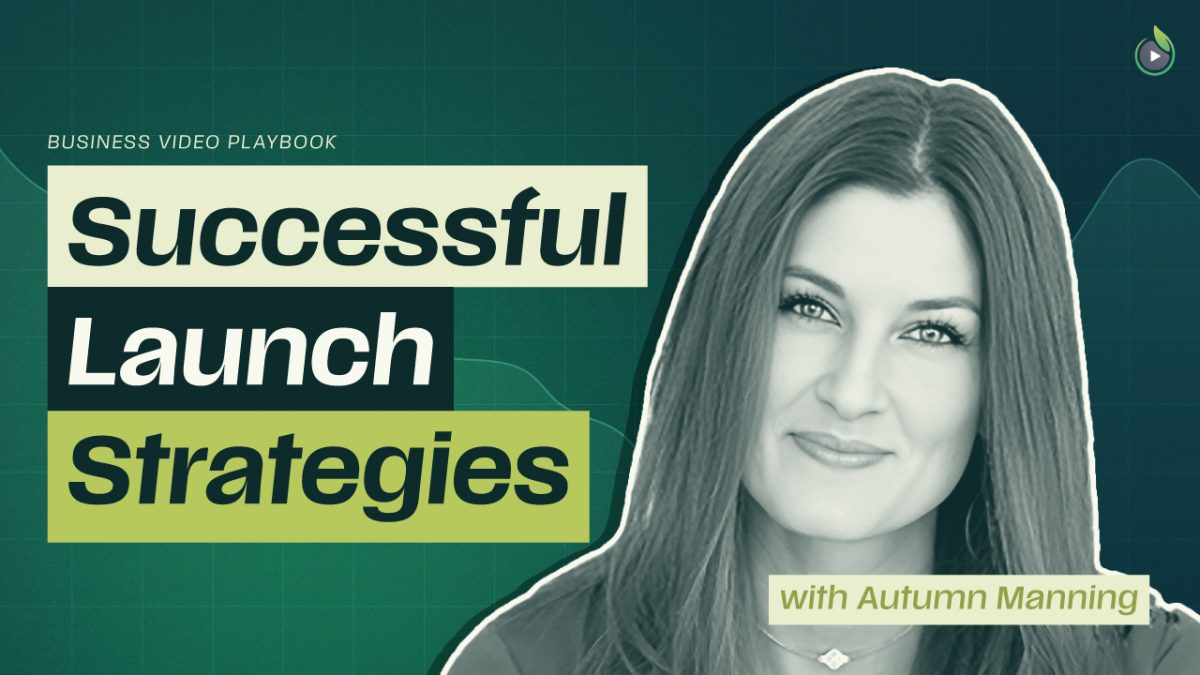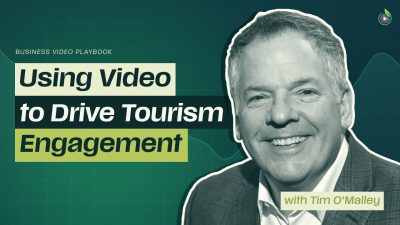Did you know that 95% of newly launched products fail? With fierce competition and shifting consumer brand expectations, standing out is more challenging than ever.
In our recent video interview with Autumn Manning, we explore how a founder-led go-to-market (GTM) strategy, powered by authenticity and video, gives startups a competitive edge and drives sustainable growth.
After all, bringing a product to market is more than just a launch—it’s about building meaningful customer connections from day one. Everything starts and ends with customer engagement, says Faana founder Autumn Manning:
“It’s hard to build something meaningfully different. Most early and growth-stage companies struggle to scale outside of the founder’s hands.”
Autumn Manning, Founder & CEO of Faana
Manning, a seasoned entrepreneur and investor, co-founded and scaled YouEarnedIt through Series B funding to a successful exit. She’s helped grow and advise many other startups, worked as a venture capitalist, and is launching a new company, Faana.
Drawing from her extensive experience, Manning breaks down the most common mistakes founders make when introducing new products. Watch the short interview to gain actionable tips as Manning shares her infectious passion and firsthand insights for a winning go-to-market strategy.
Go-To-Market Strategy Mistakes: What Founders Get Wrong and How to Fix Them
If you don’t know your ideal customer profile (ICP), you’ll take a generic approach to marketing—checking the boxes, doing blasts, and wasting a lot of money.
Instead, Manning encourages founders to start small with a hyperfocus on the needs of a small group of customers. Then, scale from there, get more creative with video, and test new channels.
The bottom line: many founders often develop a product before validating whether it solves pressing customer problems.
Common GTM Pitfalls:
- Failing to understand the ideal customer and their pain points.
- Scaling too early before establishing strong customer engagement.
- Lacking clarity in the marketing and sales funnels, which becomes evident to investors.
“Just because I feel a feature is going to work doesn’t mean the rest of the world feels it. That’s a dangerous thing for founders. You have to go through the process—not to prove yourself right, but to find where you might be wrong.”
Autumn Manning, Founder & CEO of Faana
The Key to Product Success: Deep Customer Engagement
Successful founders embed themselves in the customer experience. This closeness helps them pinpoint how to get their product into paying customers’ hands. The better they understand their customers, the stronger their foundation to scale.
This deep understanding isn’t just valuable for founders seeking funding; it’s essential. Investors quickly recognize when a startup lacks accurate customer insights. Before scaling, founders must understand how customers discover, adopt, and use their products.
“As a founder, constant customer interaction is key—not just for retention, but for truly understanding their needs and improving your product. Watching how a customer reacts to your offer—whether they lean in or pull back—tells you everything about whether you’ve nailed the messaging and product fit.”
Autumn Manning, Founder & CEO of Faana
How Video Strengthens Your Go-To-Market Strategy & Drives Engagement
Manning highlights the power of video in engaging customers, refining messaging, and generating early momentum. Beyond leveraging traditional go-to-market launch channels—such as blogs, email, social media, and landing pages—she also shares additional key video strategies, including:
- Capture User Interviews: Help product and design teams empathize with end users’ experiences, preferences, and challenges.
- Send Personal 1:1 Video Messages: Build trust and credibility with early adopters.
- Leverage Behind-the-scenes Footage: Humanize the brand and strengthen connections.
- Share A Short Thank You: Show genuine excitement during the late-stage sales cycle.
- Distribute Video with Precision: Reach your most relevant buyers across channels.
“Video is a powerful way to express genuine excitement about working with brands. Whenever the sales team had deals in the pipeline, I would record myself sharing how excited I was about the opportunity. We did this for nearly every late-stage deal.”
Autumn Manning, Founder & CEO of Faana
Why Founder-Led Go-To-Market Strategies Outperform Traditional Marketing
A successful go-to-market strategy requires founders to engage directly with customers—ensuring the product remains aligned with real-world needs. Seasoned founders personally participate in early sales, using direct outreach to validate demand, refine their pitch, and align with user needs before scaling. As companies scale, founders should remain close to sales and customer conversations to refine messaging and detect shifting needs.
As Manning emphasizes, “If you know your customers intimately, it’s easier to share an authentic expression of a conversation wherever they engage.”
“The best product launches I’ve seen are founder-led. Customers want to connect with the person behind the vision. This is so much more effective than a generic approach to marketing.”
Autumn Manning, Founder & CEO of Faana
Founder-led GTM strategies work because they ensure ongoing, real-time customer connection. Manning’s approach reflects this, emphasizing several ways to stay deeply connected with customers and the team throughout the journey using the framework below.
The Founders’ Go-To-Market Framework
- Always Stay Connected with Customers: Dedicate a portion of your week to direct outreach, sending personalized video messages, or regularly checking in with key clients to gather feedback.
- Stay a Step Ahead of Your Team: Use real-time customer insights to anticipate market shifts and proactively guide team updates to your product and GTM strategy.
- Stay Immersed in the Business and Team: Ensure the product’s heart and soul align with how you communicate its message.
- Constantly Evolve Your ICP: “It’s not a one-and-done thing.”—Hold monthly team sessions to revisit and update customer personas. Then, adjust product messaging and features accordingly.
- Continuously Refine Customer Research: Monitor your customers’ “watering holes” to identify where they spend time online. These insights help prioritize marketing distribution channels.
- Be Authentic: Leverage your customer knowledge and behind-the-scenes storytelling to strengthen your product positioning.
Ultimately, a founder’s direct involvement in the go-to-market strategy ensures that customer insights shape every aspect of the product, making the strategy more authentic and likely to succeed.
The Startup Veterans Approach To GTM
As we’ve learned from start-up veteran Autumn Manning, founder-led GTM strategies—particularly when combined with personalized video content—foster genuine customer relationships. Businesses can use these connections to add authenticity to their products, making the strategy more likely to succeed.
Long story short? Product launches are more effective and sustainable with a deep customer understanding, founder-led approach, and strategic video use. Watch the full interview to learn how. Or continue learning with our related resources:








